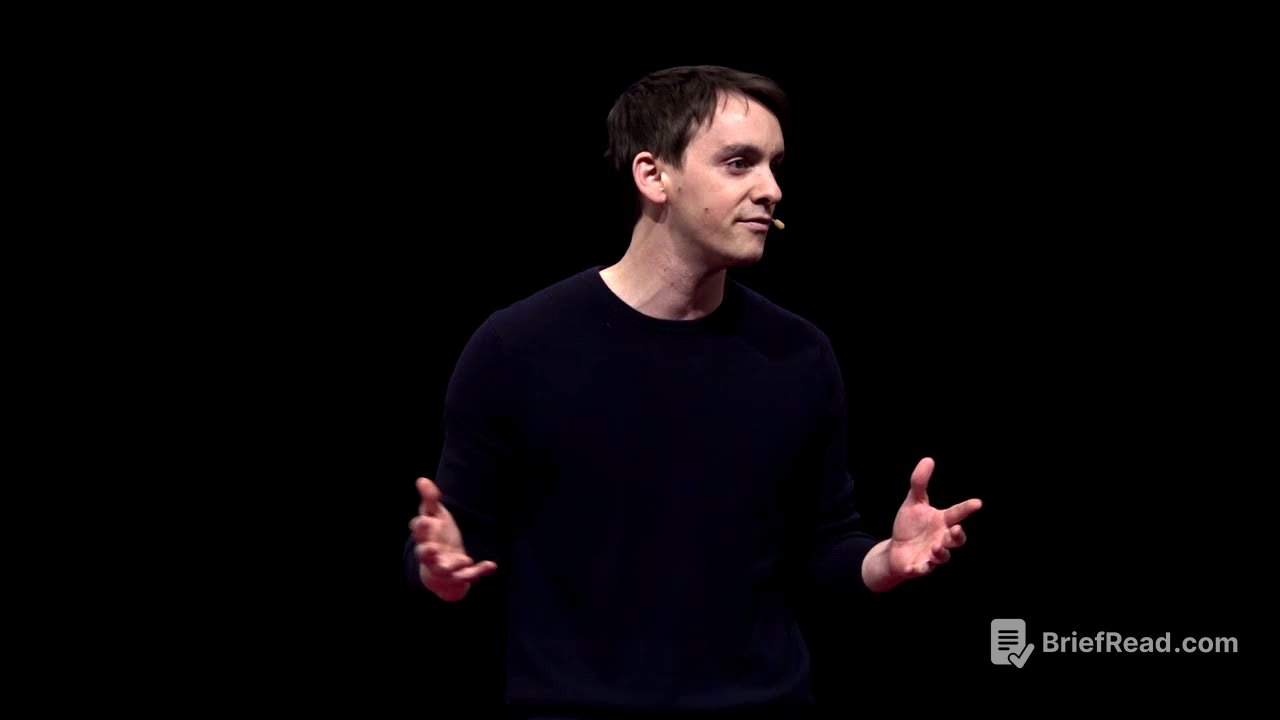TLDR;
This TEDx talk explores the science behind why we like what we like, introducing Raymond Loewy's "Maya" principle: Most Advanced Yet Acceptable. The talk explains how balancing novelty and familiarity is key to creating successful and appealing products, ideas, and even political arguments. It uses examples from technology, academia, fashion, and politics to illustrate how this principle works in various fields.
- The "Maya" principle suggests that successful creations balance novelty and familiarity.
- Familiarity is preferred due to the mere-exposure effect and evolutionary advantages.
- Examples from technology, academia, fashion, and politics demonstrate the application of the Maya principle.
Introduction: The Question of Preference [0:13]
For millennia, thinkers have pondered the nature of human preference, seeking a formula for beauty and affinity. The ancient Greeks proposed the golden ratio, while Enlightenment thinkers explored aesthetics. Today, advertisers use novelty as a primary variable, but the speaker argues that we don't actually like novelty as much as we think we do.
The Power of Familiarity [1:34]
The mere-exposure effect demonstrates that repeated exposure to a stimulus leads to a preference for it. We tend to enjoy songs with familiar chord structures and movies that are sequels or adaptations. People even prefer the face they see in mirrors because it's more familiar than their photographic image. This preference for the familiar may be rooted in evolutionary advantages, where recognizing something meant it hadn't harmed you yet.
Raymond Loewy and the Maya Principle [3:36]
Raymond Loewy, a prominent industrial designer, dedicated his life to beautifying America. He designed iconic products like the Studebaker, Greyhound bus, Coca-Cola fountain, and even Air Force One. Loewy's grand theory, "Maya" (Most Advanced Yet Acceptable), suggests that human preferences are torn between neophilia (love of new things) and neophobia (fear of the too new). To create hits, products must balance familiarity and surprise.
Maya in Technology: Spotify's Discover Weekly [7:45]
Spotify's Discover Weekly algorithm initially aimed to introduce entirely new songs, but a bug that allowed familiar songs to slip through led to higher user engagement. This showed that a bit of familiarity made the surprising new music more palatable and popular. This example illustrates that to sell something surprising, you have to make it familiar.
Maya in Academia: The Formula for a Hit Paper [9:00]
Researchers at Harvard and Northwestern sought to determine the formula for a successful academic paper. They found that proposals that were optimally familiar, balancing novelty with existing knowledge, were most likely to be accepted. This confirms that academics, like other audiences, prefer content that is advanced yet acceptable.
Maya in Fashion: The Hype Cycle of Names [10:21]
Fashion trends, like the popularity of guitar solos or skinny jeans, follow a sine wave pattern. First names also follow hype cycles, rising and falling in popularity. Sociologist Stanley Levison found that people prefer names that are familiar surprises. For example, the name Samantha rose to popularity in the 1990s but then declined as it became too common. This is also evident in the trend of black American baby girl names with the "La" prefix, where each new popular name was a play on the previous one.
Maya in Politics: The Moral Foundations Theory [15:46]
In political debates, persuasion is more effective when starting with the other person's code of ethics. The moral foundations theory suggests that it's beneficial to begin with the other person's first principles and then show how a slight shift toward the center can bridge the gap between positions. This approach, like ideological advertising, benefits from making the argument familiar and acceptable to the audience.
Conclusion: Loewy's Final Design - A Window to Home [18:17]
Raymond Loewy's final assignment was designing the interior habitat for NASA's first space orbital. His most famous contribution was adding a viewing portal, a window to space. This perfectly illustrates the Maya principle, showing that even in the most unfamiliar environment, a connection to the familiar can be a beautiful and inspiring innovation.
Q&A: Applying Maya to Diverse Backgrounds [19:38]
The speaker suggests that applying the Maya principle to promote understanding between diverse backgrounds involves creating environments where people from different ideologies and cultures can interact from a young age. This cradle-to-grave strategy focuses on building neighborhoods that foster multiculturalism and embrace diversity, recognizing that taste formation is a project that involves the community level.
